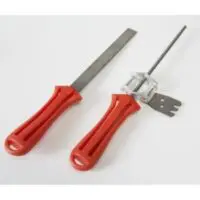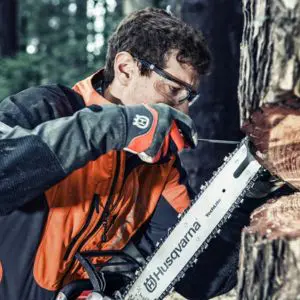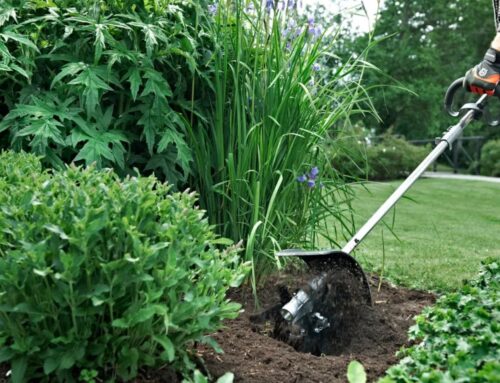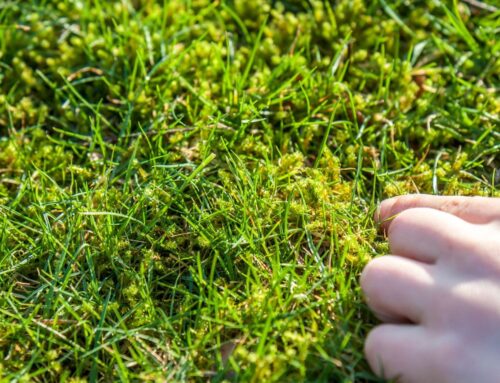
What Size Chainsaw File Do I Need for My Chainsaw?
Chainsaw files are essential tools, used for sharpening the cutting edge of a chainsaw. They help maintain the ideal angle and depth of the chainsaw’s teeth, optimising the tool’s cutting performance and extending its lifespan. However, it’s vitally important that you choose the right chainsaw file size to match your model of chainsaw. Failure to do so will make the tool more difficult to use, result in uneven cutting, and ultimately end up damaging it.
Here, we explain which types of file you need to sharpen your chainsaw, and how to determine the correct chainsaw file size. This will include showing you our Chainsaw File Size Chart. We’ll then provide a step-by-step guide of how to sharpen a chainsaw, before rounding things off with a look at the ways to best maintain chainsaw files.
The Difference Between Round and Flat Chainsaw Files
 To properly maintain a chainsaw, you need both a flat and round chainsaw file.
To properly maintain a chainsaw, you need both a flat and round chainsaw file.
Flat files are designed to set the correct height on the depth gauge, which determines how deep the chainsaw cuts.
Round files, on the other hand, are needed to sharpen the chainsaw’s teeth, so have to be exactly the right size to avoid impairing the cutting performance.
With this in mind, let’s examine how you can determine the correct size of a round chainsaw file.
What Determines the Round Chainsaw File’s Size?
 The size of your round chainsaw file is determined by the chainsaw’s pitch, which refers to the distance between the rivets on the chain.
The size of your round chainsaw file is determined by the chainsaw’s pitch, which refers to the distance between the rivets on the chain.
Although the chain pitch measurement is sure to be provided in the chainsaw’s instruction manual, it is simple enough to calculate the figure yourself. Simply measure the distance between any three consecutive rivets on the chain and divide this figure by two.
The chain pitch measurement is usually shown in inches, and there are six standard pitches available:
- ¼“ (0.25 inches)
- ¼“ P (0.25 inches)
- 0.325 inches
- 3/8“ (0.375 inches)
- 3/8“ P (0.375 inches)
- 0.404 inches
(Some chain pitch measurements are usually shown as fractions, while others are displayed as decimals. Where we have provided decimal figures in brackets, this is simply to allow for easier comparison with the other measurements.)
 Typically, the larger the chain pitch, the bigger the chainsaw. So, those with a ¼” pitch tend to be smaller and used for lighter work, while chainsaws with a 0.404” pitch will be professional-grade models.
Typically, the larger the chain pitch, the bigger the chainsaw. So, those with a ¼” pitch tend to be smaller and used for lighter work, while chainsaws with a 0.404” pitch will be professional-grade models.
Where P is displayed after a measurement, it refers to ‘picco’, indicating that the chain has lower profile teeth. In these cases, as you will see below, different-sized files are required, even if the chainsaw has the same chain pitch measurement.
So, if you’ve been asking yourself ‘what size chainsaw file do I need’, here is the answer…
Chainsaw File Size Guide
Chainsaw file measurements are usually provided in millimetres. In the chainsaw chain file size chart below, for your convenience, we have also shown them in inches.
| Chainsaw Pitch (Inches) | Round Chainsaw File Diameter (Millimetres) |
|---|---|
| ¼” | 4.0 mm (5/32“) |
| ¼” P | 3.2 mm (1/8”) |
| 0.325” | 4.8 mm (3/16“) |
| 3/8” | 5.2 mm (13/64“) |
| 3/8” P | 4.0 mm (5/32”) |
| 0.404” | 5.5 mm (7/32”) |
If you’d like to view the official Husqvarna Chainsaw File Size Chart, you can find it here.
And you can find STIHL’s Chainsaw File Size Chart towards the bottom of their Chainsaw Care: How to Sharpen a Saw Chain advice page, here.
How to Sharpen a Chainsaw Chain
A chainsaw’s teeth typically need sharpening after about four hours of use. Telltale signs are that smoke appears when you’re cutting, the chainsaw vibrates more than usual (or pulls to one side), and a fine dust is generated when cross cutting.
 To sharpen a chainsaw’s chain using a round chainsaw file, follow this 10 step guide:
To sharpen a chainsaw’s chain using a round chainsaw file, follow this 10 step guide:
- Stabilise the chainsaw using a vice.
- Next, place a filing gauge on the chain. Its arrows should be pointing towards the chainsaw’s nose.
- Identify the shortest tooth, the reason being that all of the others will need to be filed to match it.
- Place an appropriately sized round file at a 90 degree angle to the filing gauge’s rollers.
- Then, using both hands, sharpen each tooth with two to three smooth, consistent strokes, each time pushing away from your body. Be sure to rotate the file after each stroke to prevent it prematurely wearing.
- Once you’ve finished filing all of the teeth on one side of the chainsaw, take the tool out of the vice.
- Turn the guide bar around, so you’ll be working on the remainder of the teeth, and, once again, secure the chainsaw in the vice.
- Repeat the process until all of the chainsaw’s teeth are sharpened.
- Once you have done this, check the teeth are level. Make any adjustments, should they be required.
- Test the chainsaw. If it cuts smoothly, job done. If not, the teeth will probably need further sharpening.
You should check the chainsaw’s depth gauge every three or four times you sharpen the chain’s teeth. The depth gauge tool and flat file are used together to ensure it remains set at the appropriate height.
 Maintaining Chainsaw Files
Maintaining Chainsaw Files
Maintaining your chainsaw files not only lengthens their lifespan, it ensures they do the most effective possible job when sharpening your chainsaw’s chain. To keep your chainsaw files properly maintained, make sure you do the following:
- Straight after using the chainsaw files, remove any debris with a soft brush.
- Wrap your chainsaw files in a protective sleeve and store them in a cool, dry place. Keep them separate from your other tools to reduce the risk of them rubbing against hard objects.
- Periodically, give the files a quick wipe with an oiled cloth, which will help protect them from rust. Avoid using water as this can cause corrosion.
The above practice will help prolong your chainsaw files’ lifespan. However, should they start to make hard work of removing material, or if visible grooves begin to appear, the time has come to replace them.
 Find the Best Chainsaws and Chainsaw Accessories Here!
Find the Best Chainsaws and Chainsaw Accessories Here!
Here, at Garden Machinery Direct, we stock an exceptional range of chainsaws for sale. This includes cordless, electric and petrol models, made by the world’s leading chainsaw manufacturers.
We also sell a market-leading range of chainsaw accessories, including chainsaw filing kits. These are brought to you by Husqvarna and STIHL, two of Europe’s premier chainsaw experts.
And remember, if you have any questions relating to our chainsaws or chainsaw accessories, our friendly, UK-based Garden Machinery Experts are always on hand to help.




